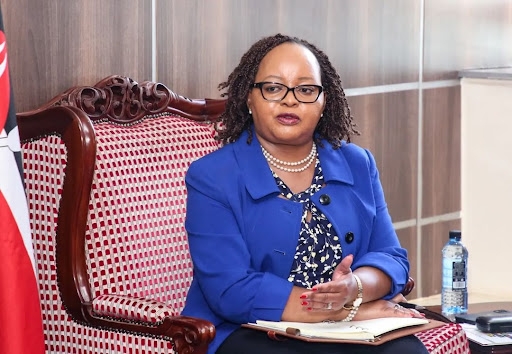Thousands of health workers will undergo refresher courses to help the government roll out its UHC plan.
The Ministry of Health is preparing the curriculum as part of aligning the workforce to the demands of the coming system.
This was revealed by Ministry of Health officials involved in preparing regulations for the four health laws that were adopted last week.
Health PS Harry Kimtai, separately, noted workers will be trained on the new IT system—the Integrated Digital Health Platform—that will be rolled out in hospitals.
“In the past, every hospital was developing its own system, but now we’ll have one system that integrates all of them. We also must ensure we protect the information that’s shared out there, so we need proper policies and training to protect them,” he said.
Murang’a county has already trained its health workers on the new system.
Governor Irungu Kang’ata said training health workers to go paperless was the most difficult bit of introducing a paperless system.
“Culture change is difficult because you need to train many health workers on refresher courses and stop doing things manually,” he said.
“You also need hardware like buying laptops, servers and you need a backup system to continually fit the situation in Murang’a. At times, Afya.ke network is down and here you are seeing the lives of many people,” he said.
To roll out the Universal Health Coverage, the government also promised health workers of promotions, and better working conditions.
These promises have also raised questions about who is exactly a health worker.
At the recently ended Mashujaa Day UHC conference, IT specialists managing Kenya’s Integrated Digital Health Platform, known as Afya KE, also demanded to be recognised as health workers, saying they will be part and parcel of healthcare delivery.
The World Health Organization classifies health workers into five broad groupings: health professionals, health associate professionals, personal care workers in health services, health management and support personnel, and other health service providers not elsewhere classified.
The Digital Health Act is one of the four bills that will support President William Ruto’s revamped UHC plan.
The others are the Social Health Insurance Act, Primary Healthcare Act and the Facility Improvement Financing Act.
Experiences of hospitals that have already gone paperless show initial resistance from medics such as doctors, nurses, and pharmacists. That is followed by a wide acceptance because Electronic Medical Records make their work easier.
“It has markedly improved patient experience in our facilities. Patients do not need to carry papers when they come to hospital, just the National ID,” said Dr Veronica Abuto, head of the Kitengela Level 4 Hospital in Kajiado county, which has already gone paperless. “You won’t be told your results are lost go and do another test. There’s also the privacy of data.”
She said the hospital is now seeing more patients, and as a result, collecting more revenue which is better accounted for.
“We were collecting Sh1.5 million a month before the system, next month it was Sh3.4 million and it's going up. In the long run, it's also an advantage to the government,” she said.
The Kenyatta University Teaching Research and Referral Hospital also has a paperless admission system.
KUTRRH chairperson Prof Olive Mugenda said health workers initially resisted the system.
“Some people didn’t want to use the system, they were used to prescribing on paper. Some didn’t want to be accountable because the system shows how many patients a doctor has seen that day. So there's accountability,” she said.
The system became more acceptable over time after user training.
“We have been forced into it given the latest machines we have like the cyberknife where you programme the machine and it treats the patient. The PET scan also is really helping coz once doctor sees a patient, the details are immediately sent to the machine,” she said.
Kang’ata, who is also digitising records at the Murang’a Level 5 Hospital, said culture change among health workers is the top challenge.
“You need to train many health workers on refresher computer courses to stop doing things manually. You need to show them how automation helps them and the people of Murang’a,” he said.
Studies around the world show that when health information technologies replace paper forms and handwritten notes, both hospitals and patients benefit strongly.











